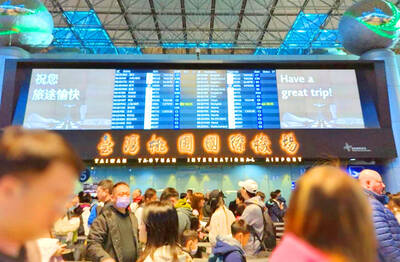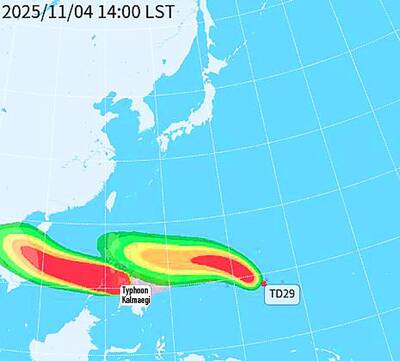A three-stage purification process used in Hsinchu City’s Gangnan Canal Park (港南運河公園) has significantly improved the environment and enlivened the canal, which had much of its life choked off by algae, the Hsinchu City Government said.
The improved water conditions have made the park an attraction for canoeing, it added.
The 20m wide, 1.5km long canal had previously suffered from eutrophication amid a lack of urban planning, an oversight that the city government has sought to correct since 2018.

Photo courtesy of the Hsinchu City Government
The plan was to landscape the entire canal shoreline to make it an attraction in the Hsinchu 17 Kilometer Coastline Scenic Area, which was completed in 2018.
The city said it focused on beautifying the area, introducing viewing platforms and greenways, and connecting the park to nearby sites such as Nanliao Fishing Harbor (南寮舊漁港), Oceanview Park and the Jincheng Lake birdwatching areas.
The city in 2020 applied for NT$60 million (US$1.94 million at the current exchange rate) in subsidies for a water purification project throughout the canal, aiming to restore the ecological environment and improve the canal’s ecological sustainability.
Using a multi-soil layering purification system upstream of the canal, about 3,000 tonnes of water have been cycled through the system each day since 2020, which has resulted in the high water quality seen today, the city said.
The canal being a calm, closed-water area makes it suitable for canoeing. After a trial run of canoeing activities in 2019, the city government opened the canal for canoeing during this year’s three-day Mid-Autumn Festival long weekend.
The opening attracted about 200 canoeists, some enjoying the activity for the first time, the city government said, adding coaches were present to help paddlers stay safe.
The city in June completed beautifying the walking paths on the south side of the canal, including greenways, seating and close to 2,000 hectares of grassland, it said.

Three Taiwanese airlines have prohibited passengers from packing Bluetooth earbuds and their charger cases in checked luggage. EVA Air and Uni Air said that Bluetooth earbuds and charger cases are categorized as portable electronic devices, which should be switched off if they are placed in checked luggage based on international aviation safety regulations. They must not be in standby or sleep mode. However, as charging would continue when earbuds are placed in the charger cases, which would contravene international aviation regulations, their cases must be carried as hand luggage, they said. Tigerair Taiwan said that earbud charger cases are equipped

Foreign travelers entering Taiwan on a short layover via Taiwan Taoyuan International Airport are receiving NT$600 gift vouchers from yesterday, the Tourism Administration said, adding that it hopes the incentive would boost tourism consumption at the airport. The program, which allows travelers holding non-Taiwan passports who enter the country during a layover of up to 24 hours to claim a voucher, aims to promote attractions at the airport, the agency said in a statement on Friday. To participate, travelers must sign up on the campaign Web site, the agency said. They can then present their passport and boarding pass for their connecting international

Taiwan sweltered through its hottest October on record, the Central Weather Administration (CWA) said yesterday, the latest in a string of global temperature records. The main island endured its highest average temperature since 1950, CWA forecaster Liu Pei-teng said. Temperatures the world over have soared in recent years as human-induced climate change contributes to ever more erratic weather patterns. Taiwan’s average temperature was 27.381°C as of Thursday, Liu said. Liu said the average could slip 0.1°C by the end of yesterday, but it would still be higher than the previous record of 27.009°C in 2016. "The temperature only started lowering around Oct. 18 or 19

WEATHER Typhoon forming: CWA A tropical depression is expected to form into a typhoon as early as today, the Central Weather Administration (CWA) said yesterday, adding that the storm’s path remains uncertain. Before the weekend, it would move toward the Philippines, the agency said. Some time around Monday next week, it might reach a turning point, either veering north toward waters east of Taiwan or continuing westward across the Philippines, the CWA said. Meanwhile, the eye of Typhoon Kalmaegi was 1,310km south-southeast of Oluanpi (鵝鑾鼻), Taiwan’s southernmost point, as of 2am yesterday, it said. The storm is forecast to move through central